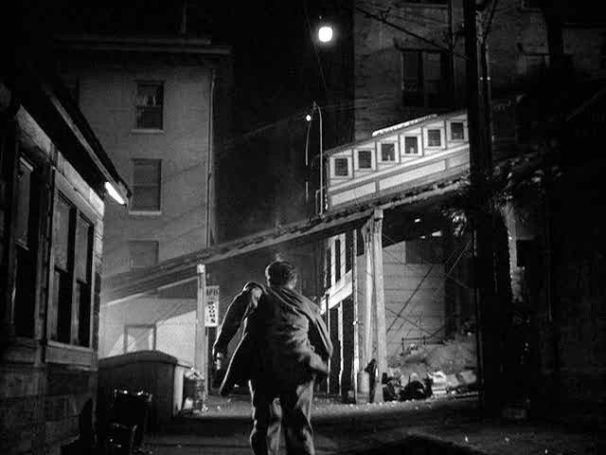
By day, it wasn’t an ‘urban underbelly.’ It was Anytown USA, a hustle-bustle neighborhood of oversized Victorian homes with porticoes and porch swings; corner grocery stores, playgrounds and bus stops. It was the terminus of the charming funicular, Angel’s Flight, that shuttled workers to and from their downtown Los Angeles jobs. By day, the flattish hilltop community was flooded by California sun. After sunset, it was a town transformed. That’s when the bars, the broads, and the bad-boys, the losers and the lost ones, skulked the streets creating a mythic identity of L.A. Noir forever linked to old Bunker Hill.
This urban saga is on offer in a new thinnish tome, Bunker Hill Los Angeles: Essence of Sunshine and Noir. The author is Nathan Marsak, a Los Angeles historian and preservation advocate.

Marsak tells the story of the district’s inception in the mid-19th century to its present day. Once home to the wealthy living in Los Angeles’s ‘first suburb,’ then the epicenter of the city’s shifting demographics, Bunker Hill survived its attempted erasure and reemerged as a hub of arts, politics, business, and tourism. The neighborhood was razed, and the Los Angeles Music Center erected. It went from bad boys to ballet boys.

We asked a friend of artsmeme, Chris Nichols, an author, cultural historian and bright light behind the “Ask Chris,” column of Los Angeles Magazine, to give us his reaction to the book.
I liked the book a lot. Nathan Marsak is brilliant and funny. He manages to weave several interconnected stories about politics, urbanism, art, film noir, redevelopment, as well as a straight history of how this neighborhood came to be — and how it came to be destroyed. The destruction of Bunker Hill is a great Los Angeles myth which everyone approaches with some intrinsic bias (like the history of Dodger Stadium) and Marsak does a good job of being impartial. He’s passionate, but not placing blame on any one person or side. He obviously spent years on research and you can tell. He talks as though he were there — and that’s my favorite kind of historian.
Chris Nichols, on ‘Bunker Hill Los Angeles: Essence of Sunshine and Noir‘
